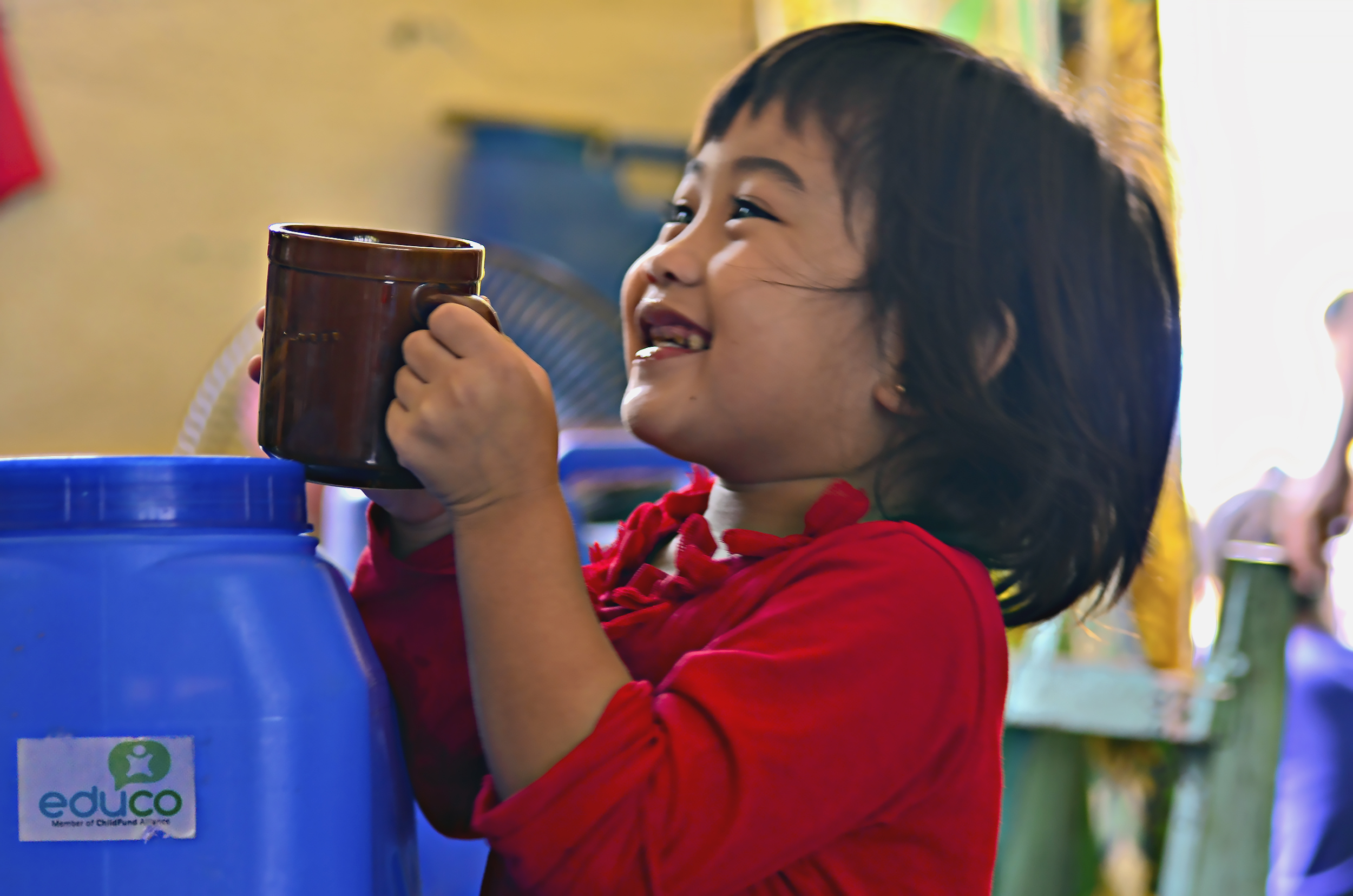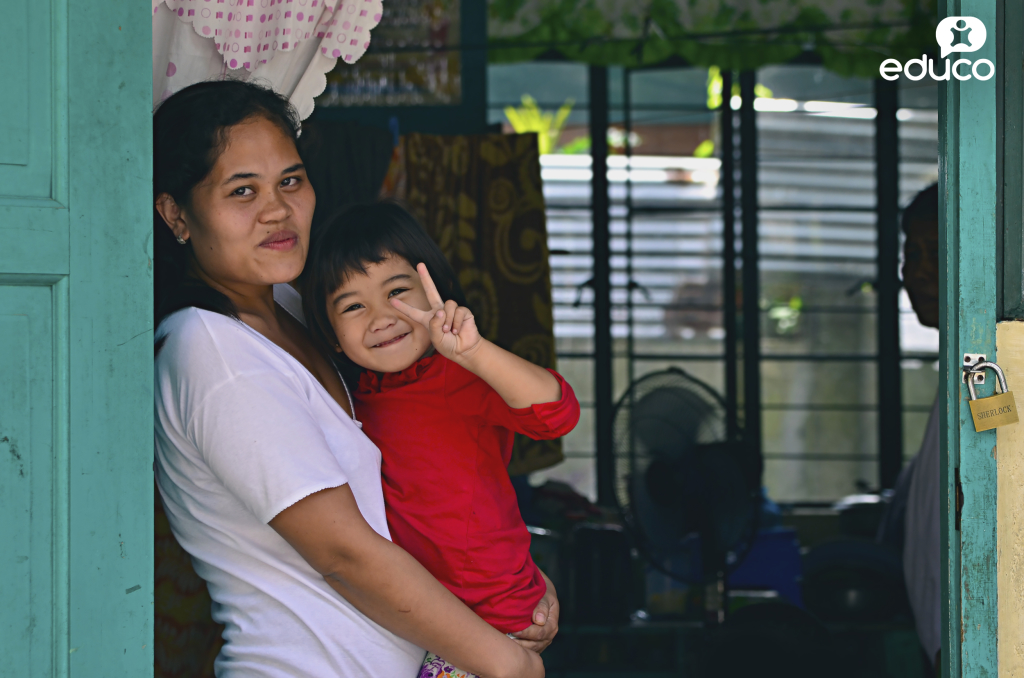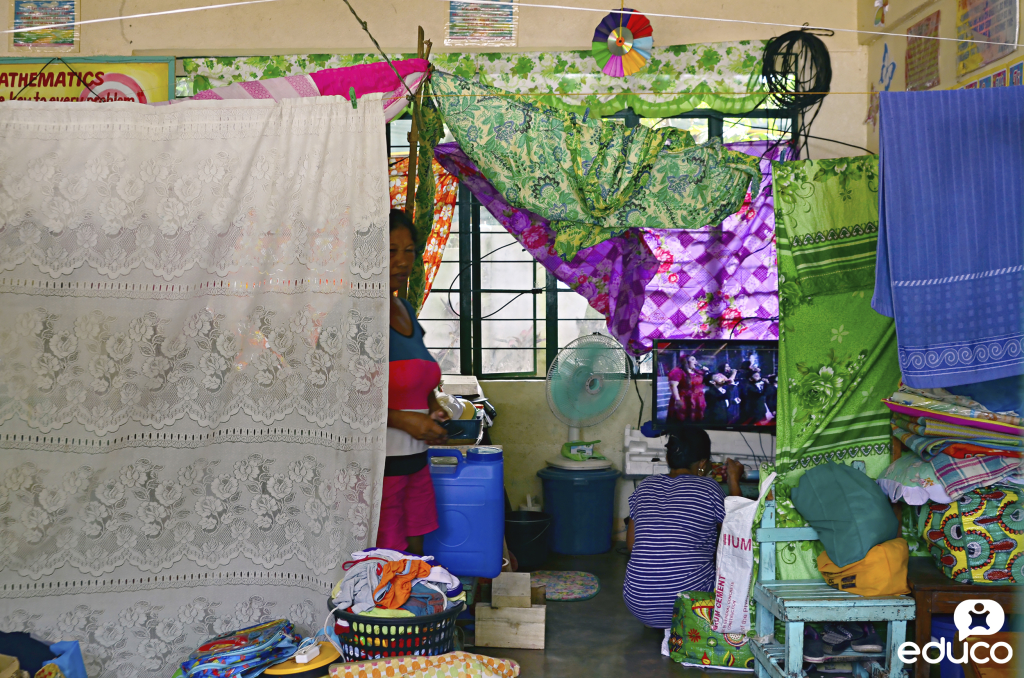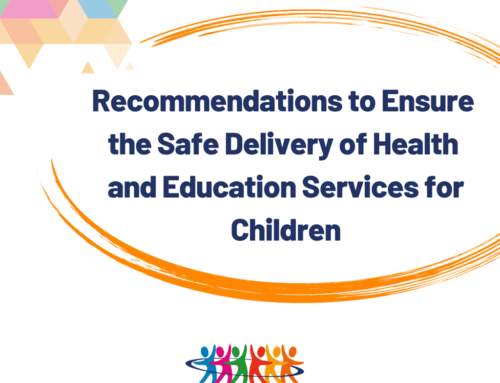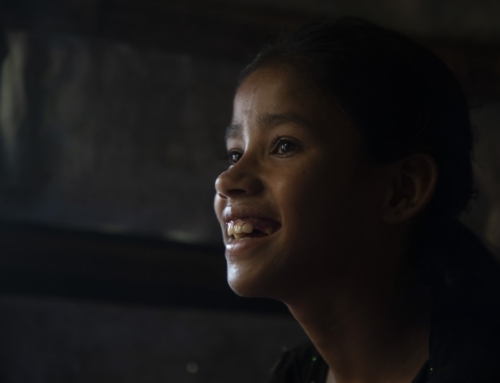“Ay, ang galing niya po d’yan! (Oh, she’s so good with that!)” Belen Nabor exclaims proudly at her two-year-old’s dexterity using a water jug their family got from EDUCO’s relief operations. Joyce fiddles with the faucet and handles a mug of water carefully all by herself. She takes a sip and smiles with pride.
When they first arrived in the evacuation camp, they didn’t have a decent container to store potable water. Every day was a struggle to fetch water for every time they needed a drink.
Now that they’ve been living within the grounds of Bubulusan Elementary School for over a month, families have gotten used to a life sharing spaces with multiple other families. In camps, there are areas for cooking, selling or exchanging goods, or even get some entertainment on the TV or radio.
Bubulusan Elementary School is one of 61 schools that served as evacuation centers around Mayon Volcano, the Philippines’ most active volcano. On 13 January 2018, it had a steam-driven eruption. By January 22, after blowing an ash column two kilometers into the sky, alert levels were raised to 4 out of 5, which meant that hazardous eruption was possible within hours or days. Up to 80,000 individuals were displaced.
Support from teachers who are managing the camps, along with relief operations that provide food and non-food items help Belen forget that they are in a middle of a disasters. “Gamit na gamit nga po ang mga hygiene kits na ibinigay ng EDUCO (Hygiene kits EDUCO provided are really being used),” Belen says as she looks over to her three kids. “Ubos na ng apo e! (They used them all up!),” she laughs.
Her family is getting by as she tends to the kids and her husband is in Manila as a factory worker. She’s also very happy to participate in the ongoing cash-for-work program. “Madali lang po. Maglililinis lang, mag-aayos, at tutulong, tapos may kita ka na (It’s easy. You just have to clean, organize, help, and you’ve earned a living.)”
She says her kids are “too happy” in the camp because their friends are all here. “Puro po laro! (They always play!),” she laughs again. Her kids go to school with other displaced children and teachers in the morning. In the afternoon, the resident students and teachers do their classes, making Belen think about her kids playing too much.
While Belen is happy that her two older kids can still go to school, her two-year old stays with her all day. Child development centers and child care workers have suspended classes for younger children.
So Joyce clings to her mom a lot, even as she prepares food or cleans around the evacuation center. It’s easier to prepare now when cooking materials, food and water are readily available says Belen. However, they still do their laundry back at home. While it is just one tricycle ride to their house, she only gets to visit about twice a week to make sure their house is in order and has not been broken into.
Belen is grateful and has only good things to say about the efforts of the community and government to make sure they live well and with dignity even in times of disaster. But she hopes to get back to the comforts of their home soon.
Two days ago, March 6, the Philippine Institute of Volcanology and Seismology finally lowered the Alert Level over Mayon. Yesterday, decampment officially commenced. Residents living outside the six-kilometer danger zone, including Belen and her kids, will finally be able to return to their homes.
For EDUCO, work on child-centered disaster risk reduction with the government and communities will continue. In the next couple of weeks, EDUCO will sustain its sessions with children and families who are still in evacuation centers. Hundreds of families who live within the six-kilometer danger zone are expected to remain in evacuation camps while Alert Levels are raised over Mayon Volcano.

